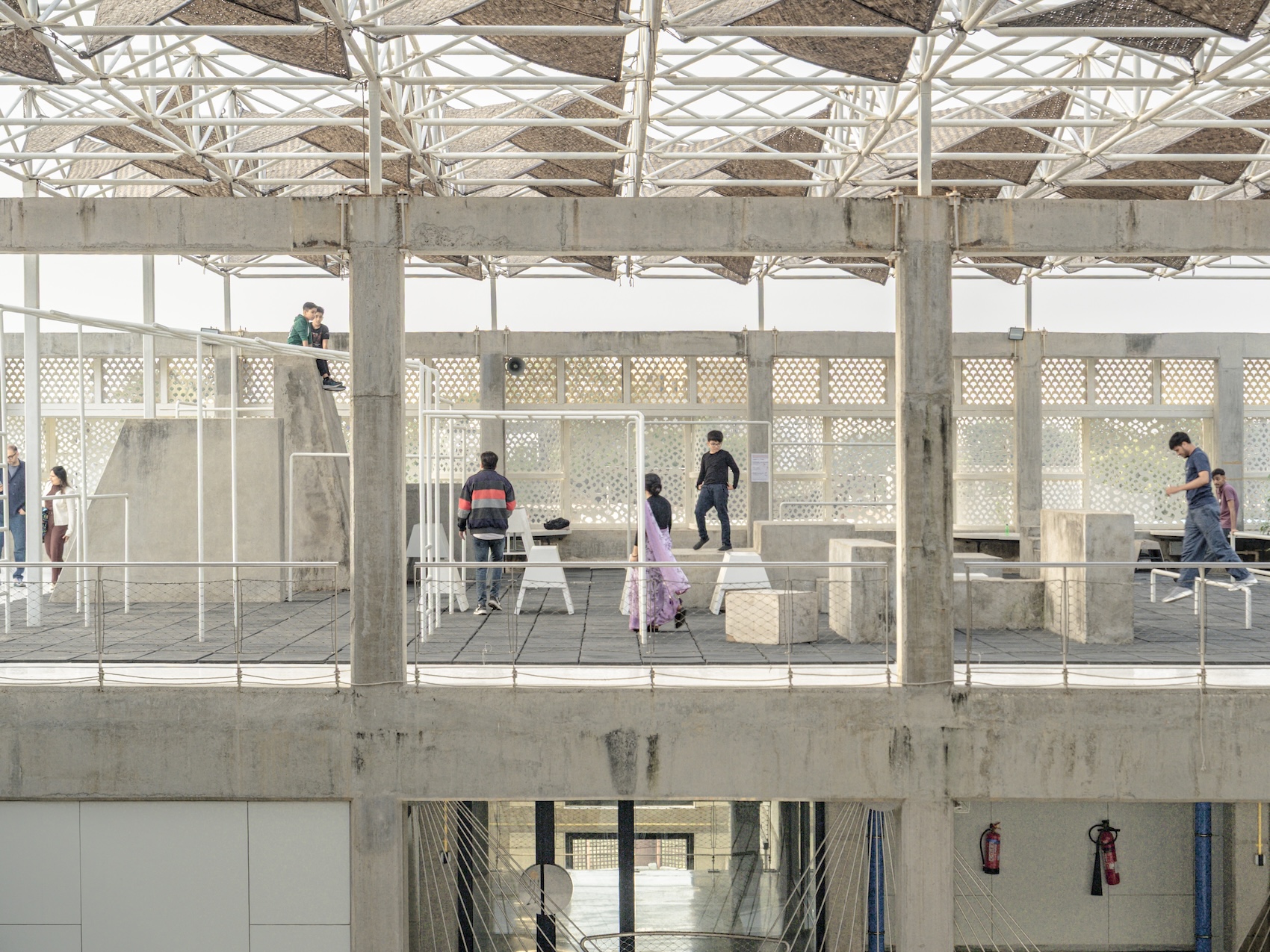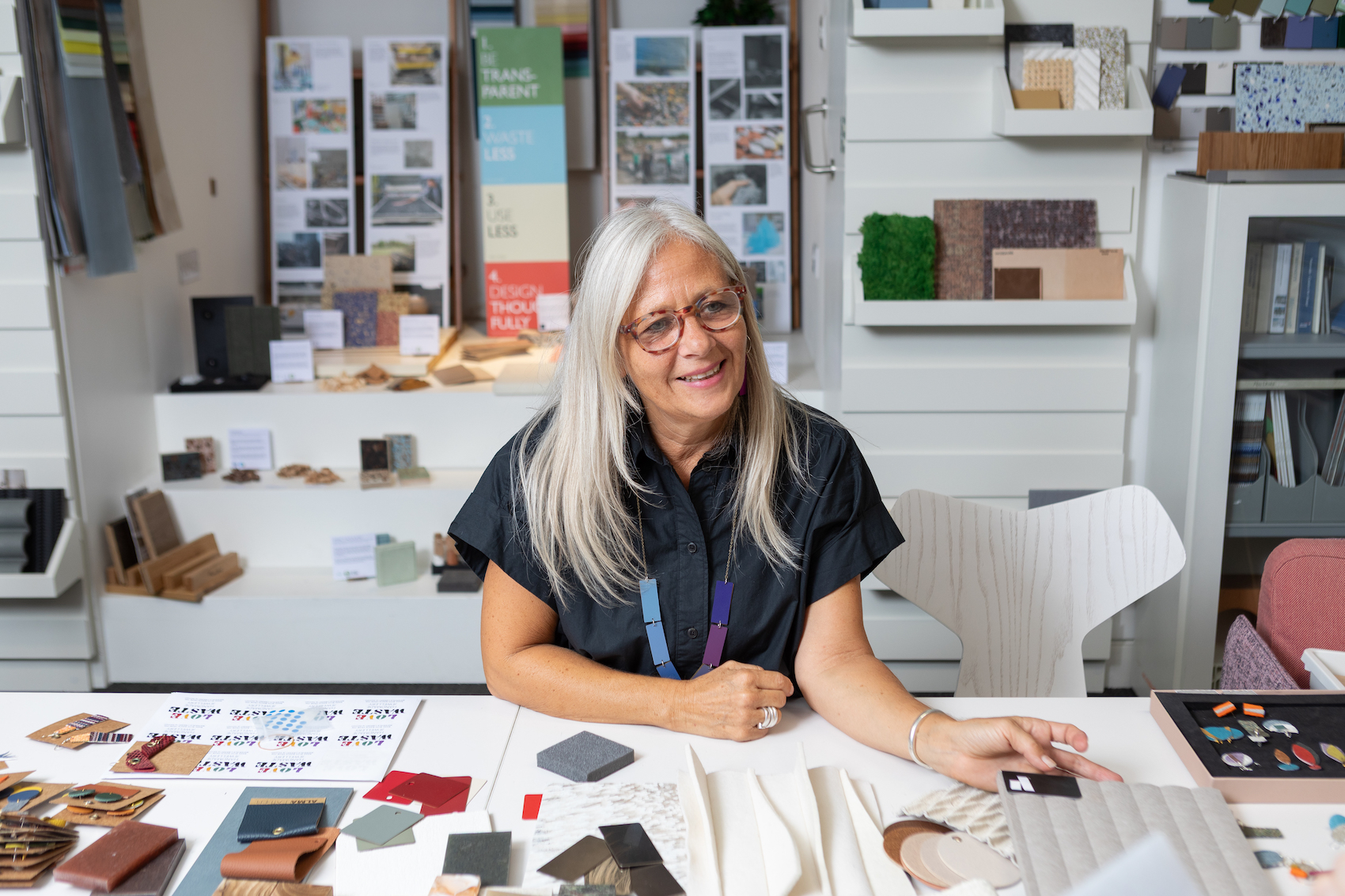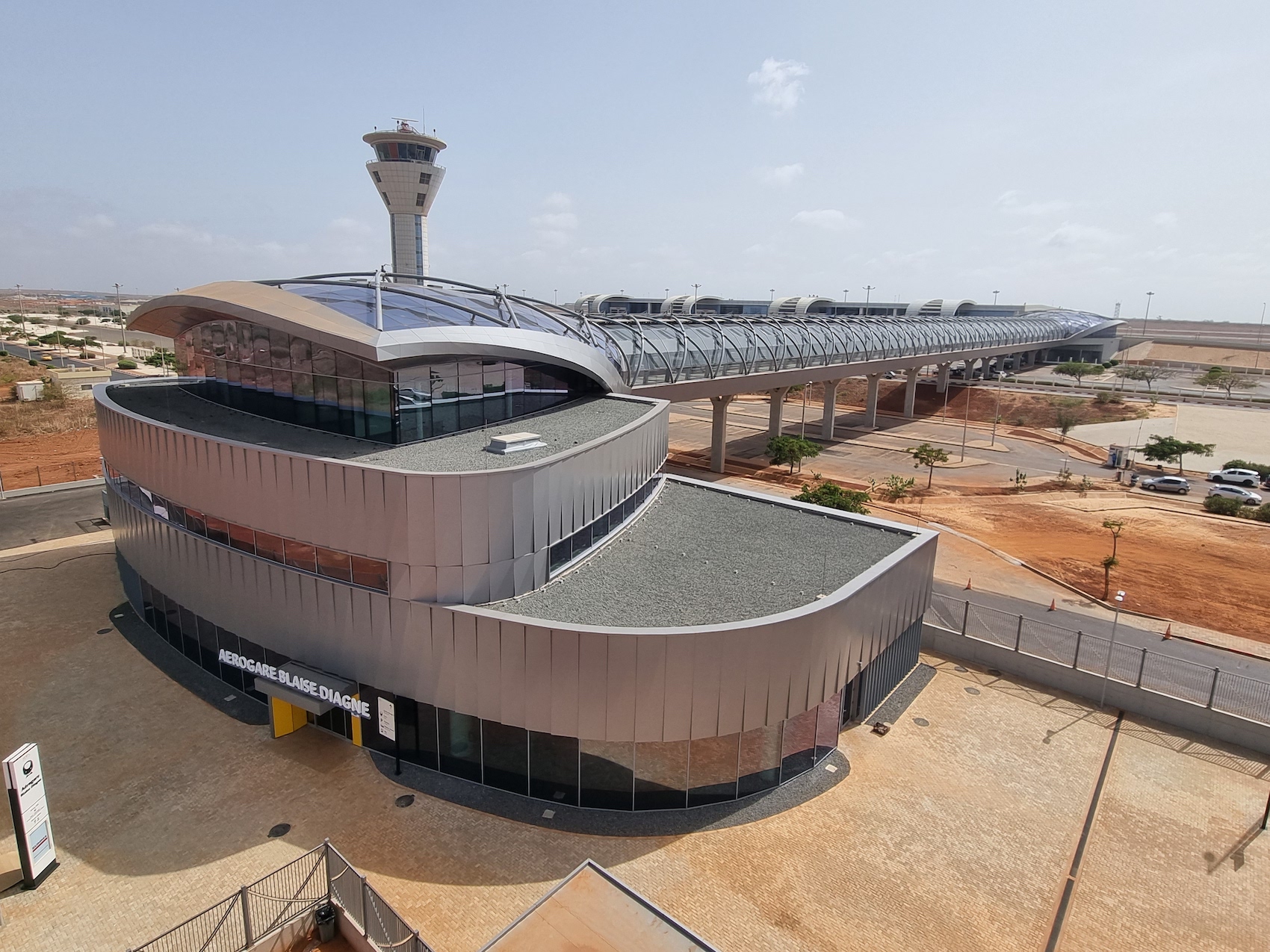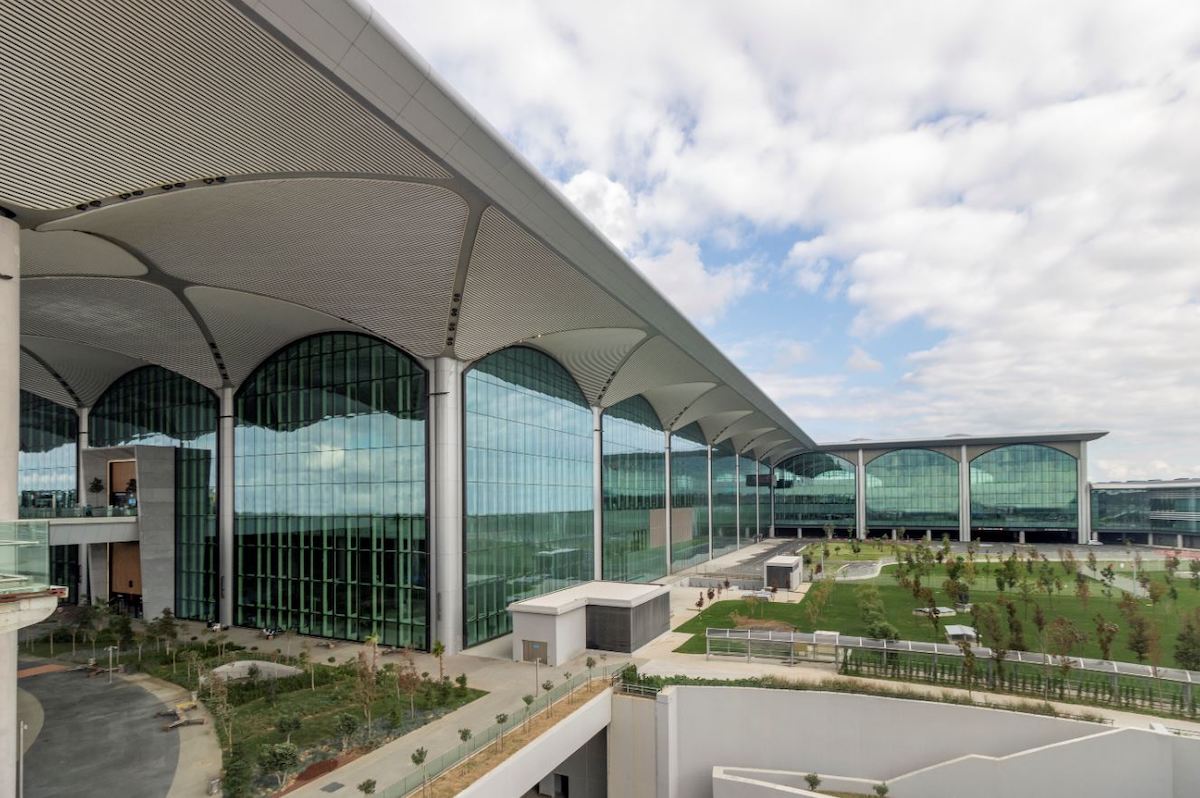BDP has completed the Oak Cancer Centre for the Royal Marsden in Sutton. Simon Allford applauds a bold response to the challenges of delivering high-quality large-scale buildings within the NHS.
It was an inauspicious start. I arrived at a sea of car parking, at what I thought was a front door to the large and sprawling web of machine-like mechanisms – wrapped, almost apologetically, in dreary skins – that pertain to be architecture. My taxi driver asked if we were near an entrance. The member of staff asked if I was well enough to walk. Having explained I wasn’t a patient, I was directed to a well-concealed door that led to the children’s cancer ward. And so I found my way to the architects and client who were waiting to receive me in the light-filled and surprisingly buzzing lobby of the Oak Cancer Centre.
My first request was that we exit the building, so I could discover the way their new building should have been approached. As we walked away, we met more architects – from another practice – who were there to be interviewed for a new masterplan. They assumed that myself and Benedict Zucchi and Dominic Hook from BDP were competing for the same. We were not. I was the interloper, there to review the building, whilst Benedict and Dominic are the architects for both the Oak Cancer Centre and the new hospital, just starting on site, that will help define the western gateway from the suburban streets. BDP have already produced a masterplan inspired by the potential to expand the Oak Centre, to engage their first building with their second, and to engage both with the other recent buildings that, until now, have been slotted like new teeth into a chaotic mouth free of orthodontic design.
I suspect I’m not the only visitor to turn up at the wrong place. It’s not the fault of the architects or their clients or their fine building. But it is a sad tale of opportunities missed – in the past, now and, despite the rumours of an impending masterplan, I fear into the future. Why? Because healthcare design is mired in the complex and absurd. Everything – buildings, operations, services – is endlessly undergoing restructurings and reorganisations defined by rules unique to the system. Most buildings within estates are built for a specific purpose, become redundant, and are left to decline before being removed. And the cycle starts again.
The building has two entrances: a lower level entrance, on the short end of the building, leads to the rapid diagnostic centre, while the upper level entrance is situated at the centre of the gently curved façade. This separation between those being tested and those undergoing treatment is pragmatic in terms of managing both infection and trauma.
In healthcare, the call is always for the new, which is understandable when you see the state of some old and not-so-old buildings – most definitely buildings not architecture – in which staff work and patients wait. But this mentality is out of synch with a world where re-use and reinvention have moved from buzzwords to become a pressing and exciting reality. Where buildings are conceived as generous containers for the dynamic theatre of everyday life: legible, adaptable, usable, delightful, and even Architectural. Happily, the Oak Cancer Centre is of this world. A building of scale mined out of the complex and confusing little city that has grown up around The Royal Marsden Hospital and The Institute of Cancer Research.
Before we entered the Oak Cancer Centre through its own front door, I was given a tour of the Maggie’s Royal Marsden (by Ab Rogers), a modest, calming essay in brightly-clothed Californian modernism sitting in a delightfully lush landscape. BDP has had to grapple with the scale-shift from this quasi-residential building to the vast Oak Cancer Centre. Maggie’s, and similar special projects, are wonderful domestically-scaled facilities offering respite and care, but they are not the engine room of the city of healthcare. Buildings like the Oak Cancer Centre are. And it is crucial that they both facilitate the fundamental NHS challenge of large-scale patient care and create a new and better environment. One where patients, staff and researchers intermingle in a new form of public building, full of light, generosity and the careful consideration of the role architecture can play in the psychology and physiology of care. Where architecture is considered as the mechanism that enhances and assists the complex interplay between all who use it.
The atrium has the feel and quality of a courtyard, softly bathed in light from above.
The building sits well in its carefully landscaped entrance – which I hope is a sign of the site’s future. We are greening our cities and the need to green our hospitals seems so obvious that it feels absurd it should need to be stated, especially when the building sits in leafy suburban Sutton. This important new landscape will fast mature and help, not only those who use the two entrances at lower and upper ground, but all those walking through and past the site. The lower entrance is to diagnostics, which the architects have cleverly designed as a separate house-within-the- house, on the basis that, once tested, many of those visiting may turn out to be free from cancer. This separation from those who may be undergoing treatment is pragmatic in terms of managing both infection and trauma.
The staff terrace leading to the clinical administration offices. It is hoped that the terrace may be accessible to patients in the future.
The upper-level pedestrian entrance – the place I left from, and to which I would have been happy to arrive – has a taxi drop-off which is vital for outpatients receiving regular chemotherapy treatment. The gentle curve of the façade welcomes all comers, and is free of the essential but industrial service vehicles that are allowed to dominate too many hospital entrances. There were no smokers either. Nor any need for yellow lines to guide us. Instead, the architecture of shadow, canopy and recess was doing its job of directing us to where we wanted to be.
Once inside, there is a very public and welcoming linear anteroom with café and receptions that links to the other buildings beyond. Through this anteroom is the business end of the hospital, another unusually generous urban space. A square or grand room – similar in principle, if not detail, to the space Charles Barry created at The Reform – it suggests the idea of a club. Though The Oak Cancer Centre is a club whose membership is involuntary it still has that comfortable feel. The atmosphere is set by the volunteers – badged as such – who give their time to reassure, welcome and guide outpatients. There is a buzz to the space because it is a single, memorable, and understandable place for many different people to do many different things: to receive treatment, to give treatment and to research the treatments that seek to turn cancer from a life-threatening condition into a chronic illness.
First-floor research centre.
This is an admirable brief for architects and architecture, and the BDP team has used it to make a building that speaks of the city rather than just being a machine for care. It could be said it is a machine for recovering in. This simple public room, though technically an atrium, has the feel and quality of a generous courtyard softy bathed in light from above and from the open galleries on the crescent elevation that conclude in a sheltered rooftop terrace. The terrace has the feel of Aalto’s Sanatorium, with sweeping views over the new landscape bank (from which, despite the architects’ best intentions and efforts, mature trees have had to be removed, but will one day grow again) and beyond, over London. Well, not on the cloudy day that I was there, and, in the words of the music hall song “if it wasn’t for the ’ouses in between!”
This multi-level space lets light into consulting rooms, research spaces and offices and is the simple device that allows orientation and navigation through the entire six storey building – including the diagnostics centre at its base which borrows light from above as it burrows into the hill. The most memorable room off this ‘public space’ is the Chemotherapy Infusion Suite. This wonderful crescent-shaped promenade, sitting above the Collaboration Bridge and below the staff terrace that tops the building, runs the entire length of the site. Here people receive their regular dose of chemotherapy overlooking the emerging landscape. This is the engine room for care but one that has the feel of a rather fine ocean liner bar with its low-level booths offering privacy but also connection. Those receiving treatment can enjoy a well-designed personal space and choose to cut themselves off from, or engage with, their neighbours, as per the designers’ intention.
The Chemotherapy Infusion Suite has the feel of an ocean liner bar. Low-level booths give those receiving treatment a choice as to whether to cut themselves off from, or engage with, their neighbours.
As we walked around the building, the architects shared their pleasure in the project, but also spoke honestly of the challenges. The stair and lifts that were conceived as a welcoming vertical promenade have a ridiculously high balustrade for reasons that are not clear to them or to anybody else. Their solution, which works well, was to perforate with pattern. The terrace, conceived as a facility for everyone, is, for the time being at least, cut off from patients by an under-used staff-only restaurant. Their solution was to deliver it, and to hope for better access in the future. I raise neither of these points as criticisms but more as statement of facts. Making a hospital building as good as this is seriously hard work. It is vital that good architects engage in this world, and that when they do they fight their corner for a more generous future. Balustrades can be made better. Attitudes to controlled access to roof terraces will evolve. The architects are designing in potential for an improved present and a better future.
The sheltered rooftop terrace has the feel of Aalto’s Sanatorium, with sweeping views over London.
When I started out in architecture, I remember criticising ABK’s Isle of Wight Hospital. I knew and liked Richard Burton but was most unsure. It was my father, who designed St Thomas’s – amongst several hospitals and other (un-cut) white tile buildings – who politely warned that I should think of the scale and complexity factor before I piled in! I have been reflecting on those factors for a good few decades. They informed my thinking over a decade or so ago, when I helped judge a competition that resulted in the appointment of what was then Rogers Stirk Harbour – a practice with many relevant skills but no experience of healthcare – to design and build, with Laing O’Rourke, the new Cancer Centre at Guys. Beyond the talent of the designers, the common thread to both projects is that they were called into being by an inspirational and open-minded client. A client not afraid to think differently and support a bigger idea for a better future. BDP of course are not new to the world of healthcare. They are serious players, and here they have shown that they too are still thinking and working hard with skill and intelligence to make sense of the complex, often contradictory and occasionally Kafka-esque world of NHS procurement. Their success in this field is predicated on their deployment of robust intelligent architectural strategies to create legible, light-filled and generous places that both defy and exploit the rules.
Oak Cancer Centre is important work in a field too often neglected by a profession that tends to celebrate domestic, community and cultural projects and the architecture of the plasterboard shadow gap. It is also a wakeup call. Either we get involved in the difficulties of the design and delivery of good hospitals and other large-scale public buildings and infrastructure, or we whither and disappear into the much smaller and somewhat privileged world of projects where we can work with more control, and inevitably at a lesser scale. This would be a loss to the profession, to architecture and to the public. And that matters. After all, architecture is a public service – is it not?
Credits
Client
The Royal Marsden
Architect, interior designer, landscape architect, sustainability consultant, BREEAM consultant, way finding/graphics, acoustician
BDP
Civil and structural engineer
Campbell Reith
Environmental engineer
Desco
Project manager/cost manager
G&T
Town planning
Lambert Smith Hampton
Traffic and transport
Motion
Fire engineer
Sweco
Building control approved inspecto
MLM
Main contractor
ISG
MEP subcontractor
MJL (now in administration)
Timber atrium wall cladding
Doug Phillips Joinery/ Gustaf’s/LSA Projects
Interior profiled acoustic panels
Doug Phillips Joinery/ Topakustic
Timber floor
Doug Phillips/Ted Todd
Indoor trees
Rochford’s Construction
Stair balustrade & soffit
Delta Fabrications
Perforated acoustic plasterboard panel (gypsum)
Stortford Interiors
Internal glazed screens
Optima glazing
GRC cladding fascias & soffits
MBX
Brick
Lester’s
Vertical shading panels
VGV Facades
Curtain wall and integrated doors
Schüco
Velux modular skylight
ISG
Revolving door
Assa Abloy
Punched windows
Schüco
Plant Louvre screen
VGV Façades
Sub and superstructure
Getjar
Hard and soft landscaping
Rochford Construction























